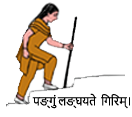The knee is a vital weight-bearing joint of our body. Though knee pain occurs in around 8% population, the knees of every individual undergo ‘wear and tear’ after the age of 40 years. It is always good to diagnose osteoarthritis of the knee at an early stage. Unfortunately, there is no way to stop degeneration nor to make joint elements regenerate. Patients with knee pain should learn the structure of the knee and understand the disease process. They should also observe the factors aggravating pain in their circumstances. Small lifestyle changes can make a big difference in the severity of pain. Pain sensitivity can be improved with good willpower. Share your experiences; take the help of relatives and friends. All these measures will reduce the burden of pain.
Patients with knee pain should not fold their knees (sitting on the floor) or squat. Likewise, they should not squat for any work such as cleaning utensils, washing clothes, cutting vegetables, cleaning the house, etc. Strain during such acts damages the knee. Commode toilets must be used by all patients with knee pain, mild or severe. An additional foam seat to increase the height of the commode can be used by those who are unable to sit on a standard height seat. Using stairs is easier with climbing up or down one step at a time. Use railings and handles for support. Soft and well-fitting footwear is desirable and should be worn all the time. Shoes or sandals are better than chappals as they correct flattening of the foot to some extent.
Pain in one knee can be relieved to some extent by holding a stick in the opposite hand. The handle of the stick should reach your wrist when the stick is held straight. The correct use of a stick should be learned and practiced well. One can also use a crutch if required. One should use a walker in case of pain in both knees.
Some patients have flat or deformed feet. Insoles made of leather, rubber, or other material help correct foot deformity to some extent and reduce knee pain. Advice from an occupational therapist is necessary for this respect. Patients with deformed or unstable knees should use a knee cap (sleeve or brace) to stabilize the knee and prevent falls. Knee caps are of different types. Use a correct size simple knee cap in the initial stages.
Weight reduction is essential for obese patients. Advice from a dietitian is invaluable. 10% weight reduction relieves knee pain to a significant extent. Aerobic exercises help weight reduction and ease knee pain too. Bench exercises (cycling in the air while lying on your back) are suitable for those who experience unbearable pain while walking. Attending a health club or a laughter club is advised for those who get bored exercising alone.
Exercise is an essential constituent of the management of knee osteoarthritis. Exercise strengthens hamstring and quadriceps muscles of the thigh, decreases stiffness, and increases flexibility and range of knee movement. Moreover, it increases ability and endurance and has a positive impact on willpower.
Exercise should be reduced or stopped in case of an increase in pain during exercise. Consult your doctor or physiotherapist for proper guidance and restart exercise once pain is under control.
Setubandhasan, pashchimottanasan, pavanmuktasan, ardhakatichakrasan, shalabhasan, dhanurasan, and veerasan are some of the yoga postures that help to relieve knee pain. One can practice most postures in standing or lying down position. However, Vajrasan and postures involving folding knees (swastikasan, padmasan, simhasan, utkatasan) should not be practiced for a long time.
Knee Exercises
See general instructions about exercise










